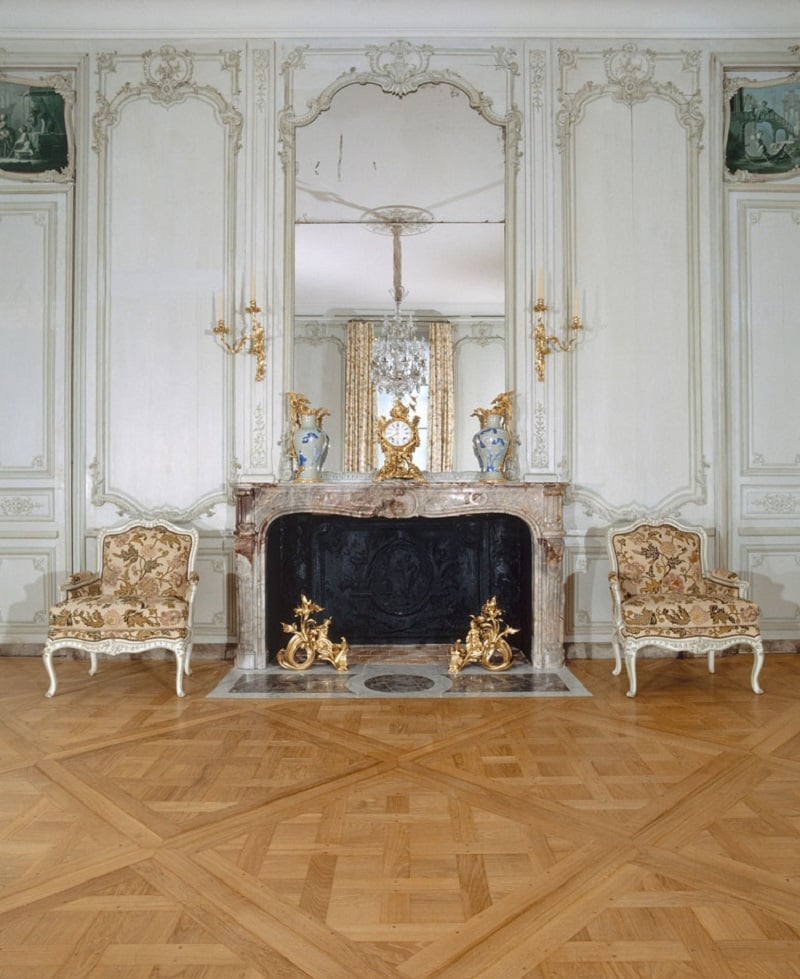
After a nearly 10-year-long absence, the Louvre’s collection of 18th-century decorative arts will go back on view starting June 6. Thirty-five newly renovated galleries in the north wing of the Louvre’s Cour Carrée have been restored in order to house approximately 2,000 pieces of furniture, objects, and functional antiquities as well as several entirely recreated interiors. The 23,000 square feet of exhibition space was originally slated to reopen last year.
Topping the list of period rooms is a drawing room from the nearby Hôtel Dangé-Villemaré. The room was acquired by the Louvre in the 1800s but has never before been displayed in its entirety. Built in 1709 and redecorated in 1750, it was originally located at Place Vendôme nr. 9, a building erected in 1699 by Jules Hardouin-Mansart. The interior was completed by Jean-Baptiste Bullet de Chamblain. Before being reconstructed within the Louvre, the room underwent a lengthy conservation process to restore the coloration and gilding of its wall panels.
The rooms of the Louvre in which the collection will be held had not be renovated since 1966 and required a multimillion dollar effort designed by interior decorator Jacques Garcia. Garcia has previously restored 17th and 18th century buildings, including what’s recognized as Hardouin-Mansart’s first project, the Hôtel Mansart de Sagonne in Paris’s Marais, and the Château de Menou in Burgundy. Garcia said he hopes the newly created rooms and displays will, “embody the constant evolution of taste, flowing in a coherent movement from the ascension of a new style during Louis XIV’s reign to the time of Marie Antoinette at the end of the Ancien Régime.”
Galleries alternate between recreations of interiors and more traditional museum exhibition settings of vitrines of antiquities, in combination with pieces of furniture in which similar motifs are illustrated. “We wanted to achieve a happy medium,” the Louvre’s decorative arts department director Jannie Durand said in a statement.
For many of the objects set to go on view, their display will be something of a homecoming. The new presentation of the collection focuses principally on artisans who served the royal family and court. Many of those craftsmen such as André-Charles Boulle, Charles Cressent, Jean-Henri Riesener, François-Thomas Germain, Robert-Joseph, Charles Le Brun, and Jean-Baptiste Oudry lived and worked within the Galerie du Louvre when the objects to be presented in its galleries were made.